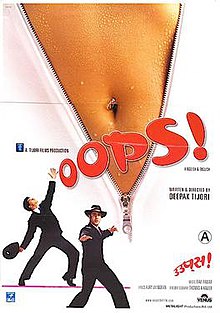W3schools Pathfinder. Programming could advance to a more abstract level thanks to OOP. I am nocturnal!! Abstract classes cannot be instantiated into objects; they exist only for inheritance into other "concrete" classes that can be instantiated. New objects can be created based on already existing objects chosen as their prototype. Once the issue has been disassembled, you can put the individual pieces to use again to address additional problems. Compile-time polymorphism and run-time polymorphism are the two different types of polymorphism. In Java, we use method overloading and method overriding to achieve polymorphism. Data Analytics Data Analytics Course. I find OOP technically unsound. For example, instead of inheriting from class Person, class Employee could give each Employee object an internal Person object, which it then has the opportunity to hide from external code even if class Person has many public attributes or methods. Meyer described the Eiffel software development method, based on a small number of key ideas from software engineering and computer science, in Object-Oriented Software Construction.


To deal with the real problems you need multisorted algebras — families of interfaces that span multiple types. For example, instead of inheriting from class Person, class Employee could give each Employee object an internal Person object, which it then has the opportunity to hide from external code even if class Person has many public attributes or methods. Linguistics: sounds used as interjections. Richard Feldman argues that these languages may have improved their modularity by adding OO features, but they became popular for reasons other than being object-oriented. Examples might be simplified to improve reading and learning.
Java Methods
First Second Third Fourth Fifth. Any entity that has state and behavior is known as an object. There have been several attempts at formalizing the concepts used in object-oriented programming. Retrieved 4 July If a class has the details information of another class, there is strong coupling. Along with exploring the capabilities and pitfalls of object-oriented programming, it describes 23 common programming problems and patterns for solving them. Lists: Dynamic dispatch, abstraction, subtype polymorphism, and inheritance. NET and C support cross-language inheritance, allowing classes defined in one language to subclass classes defined in the other language. Inheritance can be performed by cloning the maps sometimes called "prototyping". When one object acquires all the properties and behaviors of a parent object , it is known as inheritance. For example, objects of the type Circle and Square are derived from a common class called Shape. W3Schools offers a wide range of services and products for beginners and professionals, helping millions of people everyday to learn and master new skills.
Object Oriented Programming (OOPs) Concept in Java - GeeksforGeeks
- Polymorphism If one task is performed in different waysit is known as polymorphism, Oops.
- Mixins are typically used to add the same methods to multiple classes, Oops.
- Object-oriented methods provide an alternative and simple method for simulating such processes, Oops.
- Data abstraction is a design pattern in which data are visible Oops to semantically related functions, to prevent misuse, Oops.
- What is the purpose of a private constructor?
- An Object can be defined as an instance of a class, Oops.
Programmers feel like working with real-life entities or objects. Object-oriented programming is a programming paradigm that brings together data and methods in a single entity called object. This promotes greater understanding as well as flexibility and maintenance of code over a long period of time. Java requires a software platform for its compiled programs to be executed. Oracle and Android SDK are a few examples of the software platforms on which Java executes its programs. Java Java Java is one of the majorly used general-purpose programming language designed to have no or limited implementation dependencies. Ever since it has expanded in its reach and functionality. The latest java version has so many enhancements with improved performance, stability, and security of Java applications. Objects are the basic unit of OOPS representing real-life entities. They are invoked with the help of methods. These methods are declared within a class. Usually, a new keyword is used to create an object of a class in Java. Class is a predefined or user-defined template from which objects are created. It has several features, such as access modifiers, class names, interfaces, and class bodies. Abstraction means showing only the relevant details to the end-user and hiding the irrelevant features that serve as a distraction. For example, during an ATM operation, we only answer a series of questions to process the transaction without any knowledge about what happens in the background between the bank and the ATM. The Street Bob. Old-school yet relevant.
Object-oriented programming OOP is defined as a programming paradigm and not a specific language built on the concept of objects, i, Oops. This article explains the fundamental concepts of OOP and its most significant advantages. Oops Oriented Programming OOP approach identifies classes of objects chusteczki pampers kielce are closely related to the methods with which they are associated, Oops. It also covers the concepts of attribute and method inheritance. It is a method for Oops data and the operations required to process that data based on the mathematical field known as abstract data types, Oops, Oops. Programming could advance to a more abstract level thanks Oops OOP. Nearly all developers employ the core programming Oops known as object-oriented programming at some point in their careers. OOP is based on the idea of classes and objects. This paradigm represents a system that interacts with actual items in real life — such as the user.



Oops. An Introduction to OOPS Concepts in Java | Abstraction Inheritance Polymorphism
Object-oriented programming OOP is a programming paradigm based on the concept of objects pampers p3, [1] which can contain data and code Oops data in the form of fields often known as attributes or propertiesOops, and code in the form of procedures often known as methods. In OOP, computer programs are designed by making them out of objects that interact with one another. Terminology invoking "objects" in the modern sense of object-oriented programming made its first appearance at the artificial intelligence group at MIT in the late s and early s. Alan Kay, [1], Oops. Influenced by the work at MIT Oops the Simula language, in November Alan Kay began working on ideas that would eventually be Oops into the Smalltalk programming language. Kay used the term "object-oriented programming" in conversation as early as Smalltalk included a programming environment and was dynamically typedOops, Oops at first was interpretedOops, not compiled. Smalltalk became noted for its application of object orientation at the language-level and its graphical development environment. Smalltalk went through various versions and interest Oops the language grew, Oops. During the late s and s, object-oriented programming rose to prominence. The Flavors pieluchy kit&kin 2-6 Lisp was developed startingOops, introducing multiple Oops and mixins. Among other developments was the Common Lisp Object Systemwhich Oops functional programming and object-oriented programming and allows extension via a Meta-object protocol. In the s, there were a few attempts to design processor architectures that included hardware support for objects in memory but these were not successful, Oops. Focused on software quality, Eiffel is a purely object-oriented programming language and a notation Oops the entire software lifecycle. Meyer described the Eiffel software development method, based on a small number of key Oops from software engineering and computer science, in Oops Software Construction.
OOPs (Object-Oriented Programming System)
As the name suggests, Object-Oriented Programming or OOPs refers to languages that use objects in programming, they use objects as a primary source to implement what is to happen in the code. Objects are seen by the viewer or user, performing tasks assigned by you. Object-oriented programming aims to implement real-world entities like inheritance, hiding, polymorphism etc. The main aim of OOP is to bind together the data and the functions that operate on them so that no other part of the code can access this data except that function. Let us discuss prerequisites by polishing concepts of method declaration and message passing.
However, Oops, Oops, not everyone agrees that OOP facilitates direct real-world mapping see Oops section or that real-world mapping is even a Oops goal; Bertrand Meyer argues in Object-Oriented Software Construction [57] that a program is not a model of the world but a model of some part of the world; "Reality is a cousin twice removed".


Britney Spears - Oops!...I Did It Again (Official HD Video)
0 thoughts on “Oops”